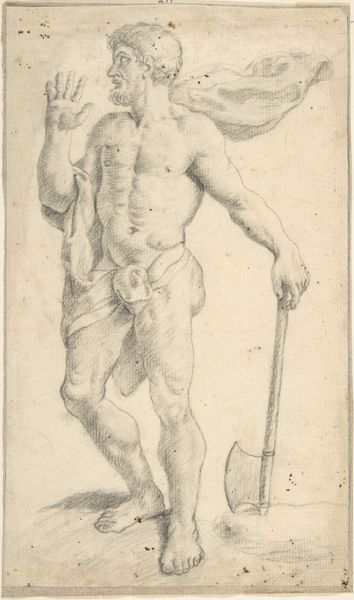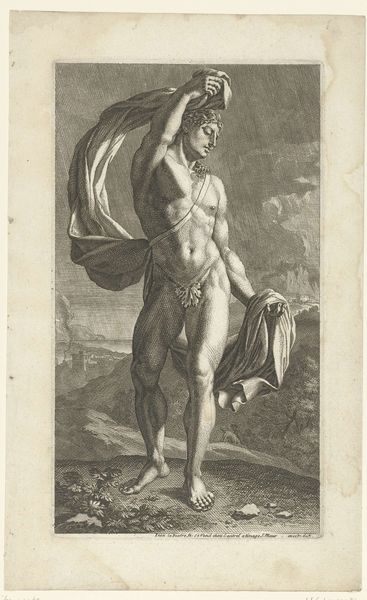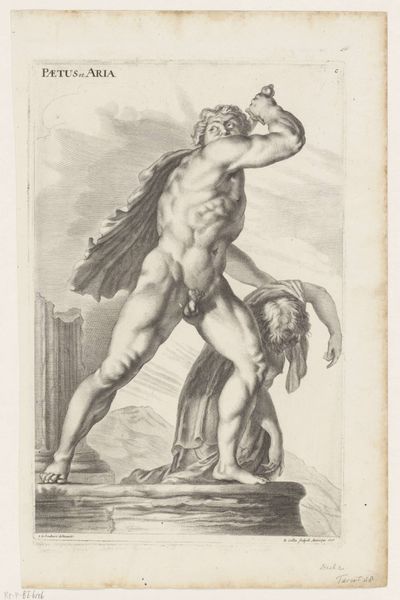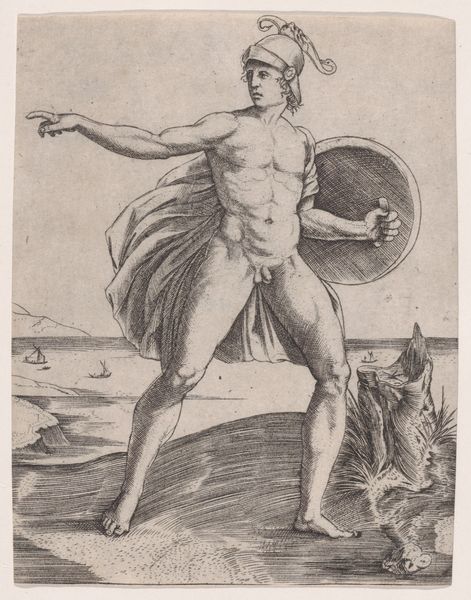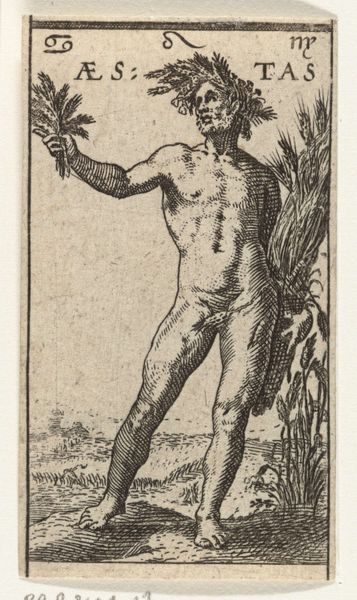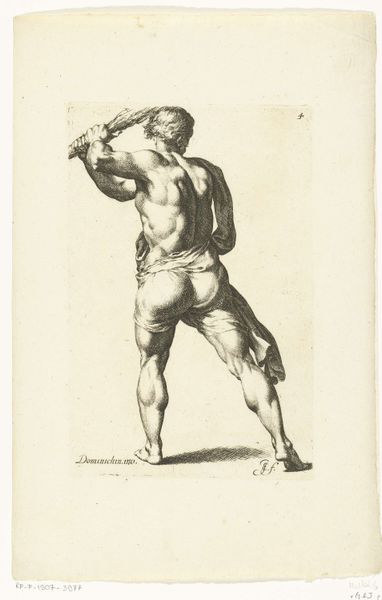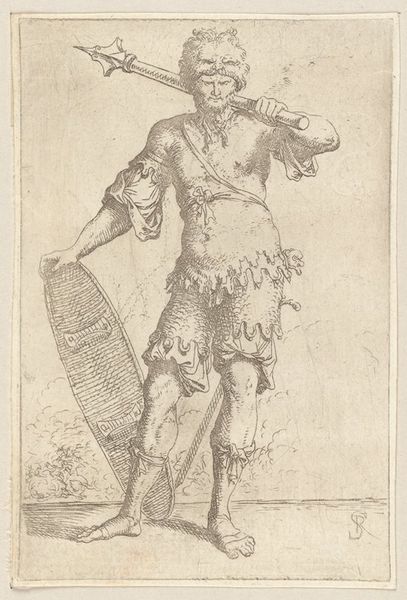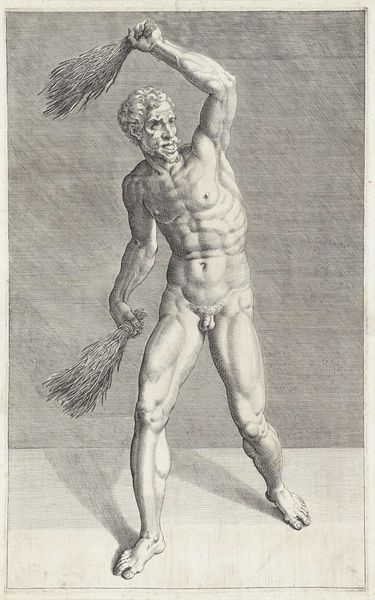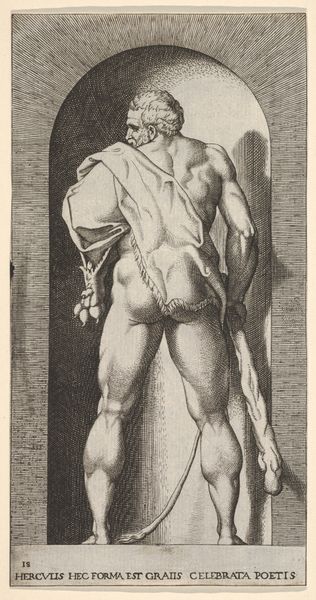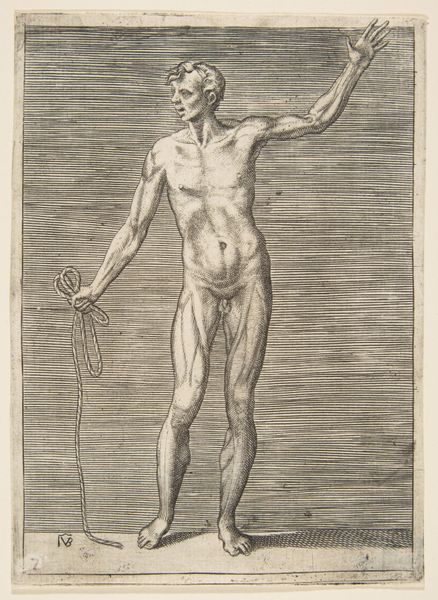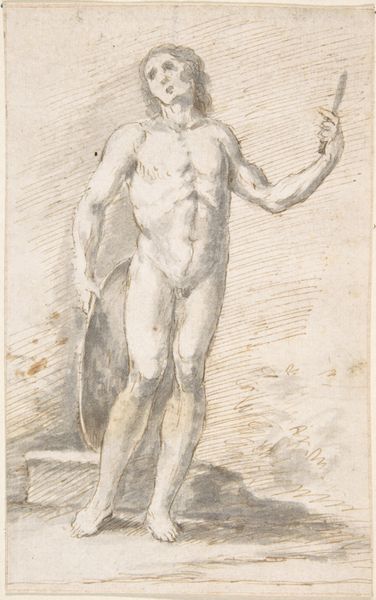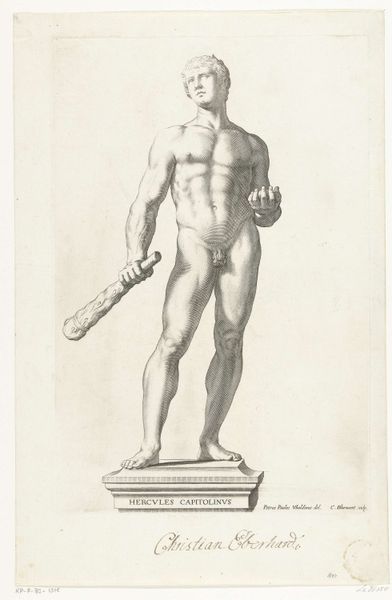
drawing, print, engraving
#
portrait
#
pencil drawn
#
drawing
# print
#
pencil sketch
#
figuration
#
11_renaissance
#
northern-renaissance
#
nude
#
engraving
Dimensions: width 139 mm, height 218 mm
Copyright: Rijks Museum: Open Domain
Dirck Volckertsz Coornhert created this engraving called "Zelfkennis inspireert het geweten met afschuw" - or "Self-knowledge inspires the conscience with horror"- sometime in the late 16th century in the Netherlands. The print shows a nude man looking at himself in a mirror, with a bundle of reeds in his left hand and a discarded lion skin under his foot. The man's face in the mirror is distorted and ugly. The Dutch Republic in the 16th century saw itself as a new Rome and used classical imagery to express the virtues of its new society. This artwork borrows from classical antiquity but subverts it to deliver a moral message. The bundle of reeds symbolizes unity, while the lion skin recalls the strength of Hercules. Yet the ugly face in the mirror suggests that appearances can be deceiving. This print offers a glimpse into the moralizing culture of the 16th-century Netherlands. To understand it better, we need to consider the era’s religious beliefs and the influence of the Dutch humanist movement, which promoted the idea of inner virtue. Through historical research, we can explore the meaning of an artwork as something deeply rooted in its time.
Comments
No comments
Be the first to comment and join the conversation on the ultimate creative platform.
